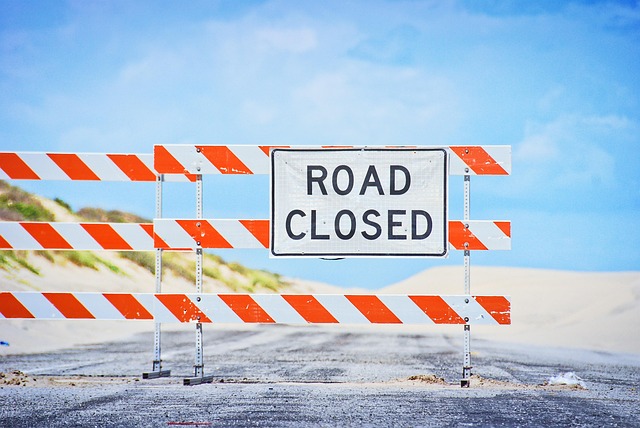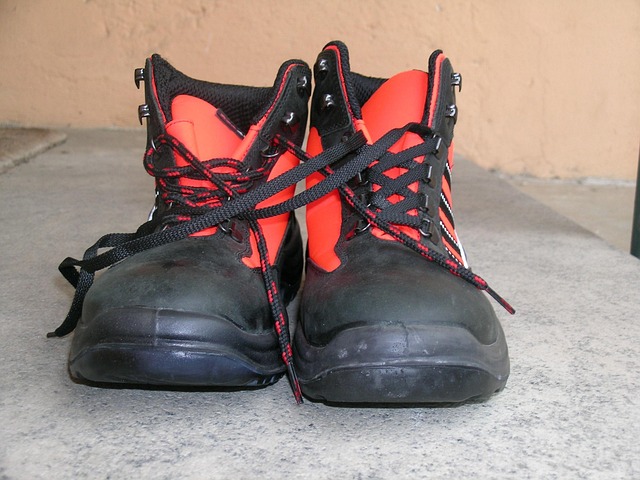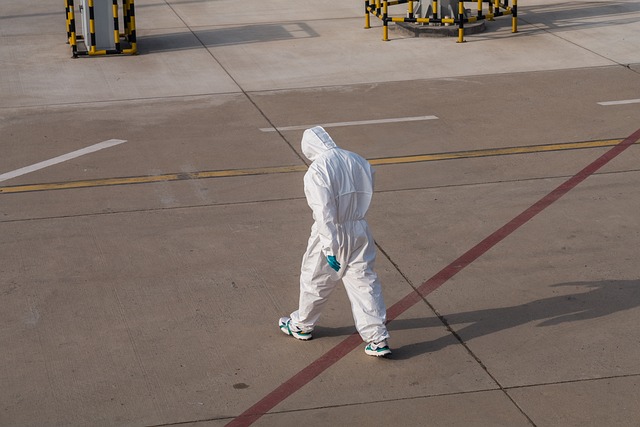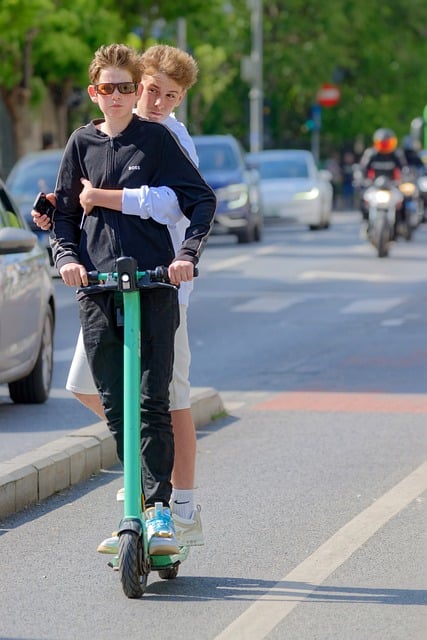Motorcyclists face unique visibility challenges, prompting them to adopt specific Select Road Safety Tips for enhanced safety. These include wearing high-visibility clothing and reflective gear, using functional motorcycle lights, securing parking, and utilizing real-time traffic apps. Additional tips like maintaining safe following distances, understanding blind spots, and staying alert mitigate risks during day and nighttime riding. Choosing protective gear with proper fit and implementing defensive driving techniques further ensure well-being on the roads, fostering better road sharing experiences for all users.
Motorcyclists are often invisible on the roads, facing significant visibility challenges that put them at risk. This article delves into the key factors contributing to reduced visibility for motorcyclists, both during day and nighttime riding. We explore effective lighting solutions, the importance of high-visibility clothing, defensive driving techniques, and essential road safety tips for sharing the road with these vulnerable riders. Understanding these aspects can enhance everyone’s safety on our highways.
- Understanding Motorcyclist Visibility Challenges
- Key Factors Contributing to Reduced Visibility
- Effective Lighting Solutions for Nighttime Riding
- Choosing High-Visibility Clothing and Accessories
- Road Positioning and Defensive Driving Techniques
- Select Road Safety Tips for Sharing the Road with Motorcyclists
Understanding Motorcyclist Visibility Challenges

Motorcyclists often face unique challenges when it comes to visibility on the roads. Unlike cars, motorcycles have a smaller profile and less protection, making them more difficult for drivers to spot, especially in adverse weather conditions or low-light situations. One of the primary issues is their blend into the environment—a motorcycle can easily disappear into a car’s blind spot or merge with surrounding traffic, going unnoticed. This anonymity can be dangerous as it reduces the time drivers have to react and make decisions, which is crucial for preventing accidents.
To mitigate these visibility challenges, motorcyclists should consider implementing specific road safety tips. Wearing high-visibility clothing, especially during early morning or dusk hours, can significantly increase their profile and alertness to other drivers. Additionally, using reflective gear and ensuring the motorcycle’s lights are functional year-round can make a substantial difference. Safe parking practices for secure vehicle storage and utilizing best apps for real-time traffic updates can also help motorcyclists plan safe road trips with family, enhancing their overall experience while prioritizing their safety on the roads.
Key Factors Contributing to Reduced Visibility

Motorcyclists often face unique challenges when it comes to road safety due to their reduced visibility compared to larger vehicles. Several key factors contribute to this issue. First, motorcycles are typically smaller and more compact, making them harder to spot, especially at intersections or in heavy traffic. Second, unlike cars, motorcycles lack the built-in reflective surfaces and lights that can enhance their visibility during low-light conditions or bad weather. Additionally, the wearing of dark clothing increases the risk, as it absorbs light rather than reflects it.
To mitigate these risks, motorcyclists should consider implementing specific road safety tips. Wearing a well-fitting bicycle helmet is paramount, offering crucial protection in case of accidents. Ensuring your motorcycle is visible to others can be achieved by using reflective gear and lights, especially when riding at night or during poor visibility. Also, understanding blind spots while changing lanes is vital; checking over your shoulder and utilizing mirrors can help prevent collisions with other vehicles. Furthermore, maintaining a safe following distance gives motorcyclists more time to react to unexpected situations, enhancing their overall visibility and safety on the roads.
Effective Lighting Solutions for Nighttime Riding

Motorcyclists face unique challenges when navigating the roads at night, making effective lighting solutions crucial for their safety. Well-designed lighting systems can significantly enhance visibility, allowing riders to be seen and to judge distances accurately in low-light conditions. LED lights are increasingly popular due to their brightness, energy efficiency, and longevity. These lights should include headlamps with adjustable beam patterns to cater to different driving environments—from open highways to narrow urban streets.
When selecting road safety tips for nighttime riding, remember that a comprehensive approach is key. Beyond lighting, ensure your vehicle has a well-stocked emergency kit essential for every vehicle, including basic tools, a first aid kit, and reflective gear. Additionally, consider incorporating preventive measures to avoid common traffic accidents by staying alert, maintaining a safe following distance, and wearing appropriate protective gear, such as a bicycle helmet fitted correctly for both adults and kids, to mitigate potential risks.
Choosing High-Visibility Clothing and Accessories

Motorcyclists can significantly enhance their visibility on the roads by selecting high-visibility clothing and accessories. Reflective gear, such as jackets, pants, and gloves, is a crucial road safety tip for riders. These items are designed to reflect light, making cyclists more visible to drivers, even during low-light conditions or in bad weather. Additionally, incorporating bright colors like fluorescent yellow or orange ensures that motorcyclists stand out from the surroundings, especially when riding in urban areas or at dawn and dusk.
When choosing protective gear, riders should consider not just its visibility but also its ability to provide driver safety tips for beginners. For instance, wearing a helmet with a face shield offers both enhanced visibility and protection against potential hazards. Moreover, ensuring proper fit and usage of life-saving equipment like airbag jackets (airbag safety: deployment and precautions) can make a significant difference in the event of an accident. Such proactive measures not only protect riders but also encourage drivers to exercise greater caution while sharing the road.
Road Positioning and Defensive Driving Techniques

Motorcyclists often find themselves at the mercy of other drivers’ actions on the road. To enhance safety, they must master defensive driving techniques. Positioning themselves strategically is key; they should maintain a safe distance from other vehicles and choose lanes that offer better visibility. By being proactive and aware of their surroundings, cyclists can anticipate potential hazards, such as signs of a potentially dangerous driver ahead, and respond accordingly.
When it comes to road safety tips, especially for motorcyclists, defensive driving is crucial. This involves predicting other drivers’ movements and planning several steps ahead. For instance, if a cyclist has consumed alcohol or drugs, their perception and reaction times are impaired, making defensive driving even more vital. Additionally, avoiding road rage triggers is essential; maintaining a calm demeanor and respecting other drivers can help prevent dangerous situations from escalating.
Select Road Safety Tips for Sharing the Road with Motorcyclists

Sharing the road with motorcyclists requires a heightened level of awareness and vigilance from all drivers. Here are some select road safety tips to ensure everyone’s well-being on the roads:
1. Anticipate and Be Mindful: Always remember that motorcycles are smaller and often invisible in traffic. Check your mirrors frequently, and make sure you’re aware of their presence, especially during blind spot changes or when merging into traffic.
2. Maintain Safe Following Distance: Keep a greater distance from motorcyclists than you would for other vehicles. This allows them more time to react and brake safely if needed. Sudden stops can be hazardous for motorcycles, so leaving extra space can prevent accidents. In adverse weather conditions, increase this distance as visibility and road conditions may impact their ability to maneuver.
3. Respect Motorcyclists’ Space: Avoid tailgating or making sudden lane changes that could put a motorcyclist in danger. Allow them enough room to maneuver, especially when overtaking. Also, be cautious of your vehicle’s blind spots, as motorcyclists can easily be hidden from your view.
4. Use Turn Signals and Check Blind Spots: Always indicate your intentions clearly, using turn signals well in advance. This helps motorcyclists anticipate your moves and makes the road more predictable for everyone. Before changing lanes or turning, check for cyclists by glancing over your shoulder and into blind spots.
5. Be Prepared for Unexpected Maneuvers: Motorcyclists can be more agile but may also make sudden maneuvers to avoid hazards. Be prepared for them to take evasive action, especially at intersections or when they need to navigate around obstacles.
6. Emergency Kit Essentials: Ensure your vehicle has an emergency kit containing essentials like a first-aid kit, flashlight, and reflective triangles (for breakdowns). This is not only beneficial for your safety but also for motorcyclists who may face similar emergencies on the road. Remember, safe driving practices after consuming alcohol or drugs are crucial, and this includes being mindful of sharing the road with vulnerable cyclists and riders.
These simple yet vital tips can make a significant difference in keeping roads safer for everyone, including child car seat installation experts and those who prioritize safe driving habits.
Motorcyclists’ visibility is a critical aspect of road safety that requires collective effort. By understanding the challenges and adopting effective strategies, such as improved lighting, high-visibility gear, and defensive driving techniques, we can significantly enhance their safety on the roads. Remember, when sharing the road, staying vigilant and following the select road safety tips outlined in this article can make a world of difference for motorcyclists. Together, let’s ensure every journey is a visible and secure one.
